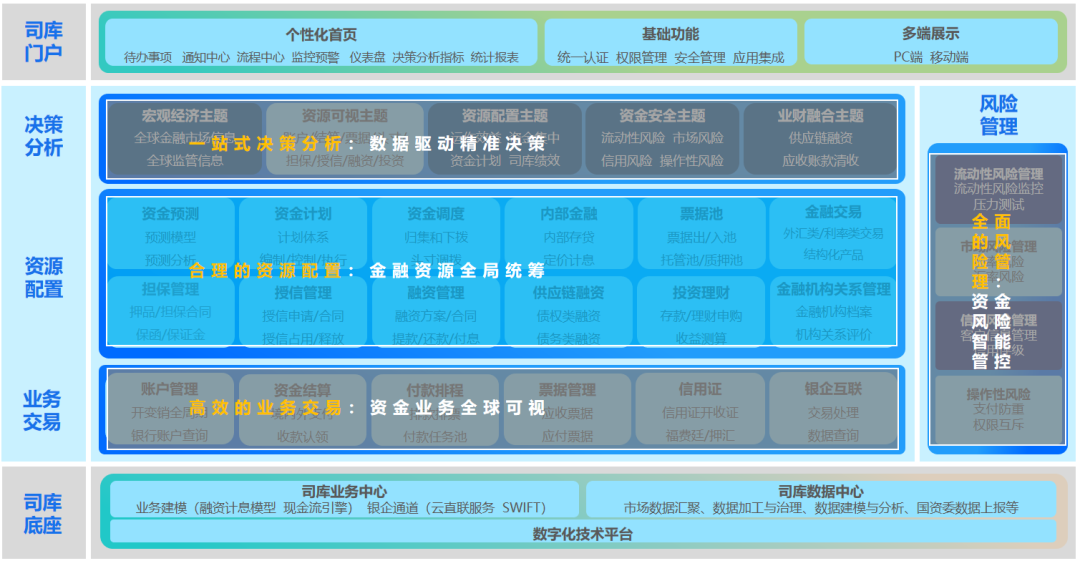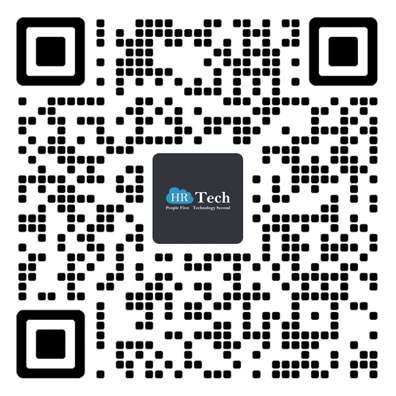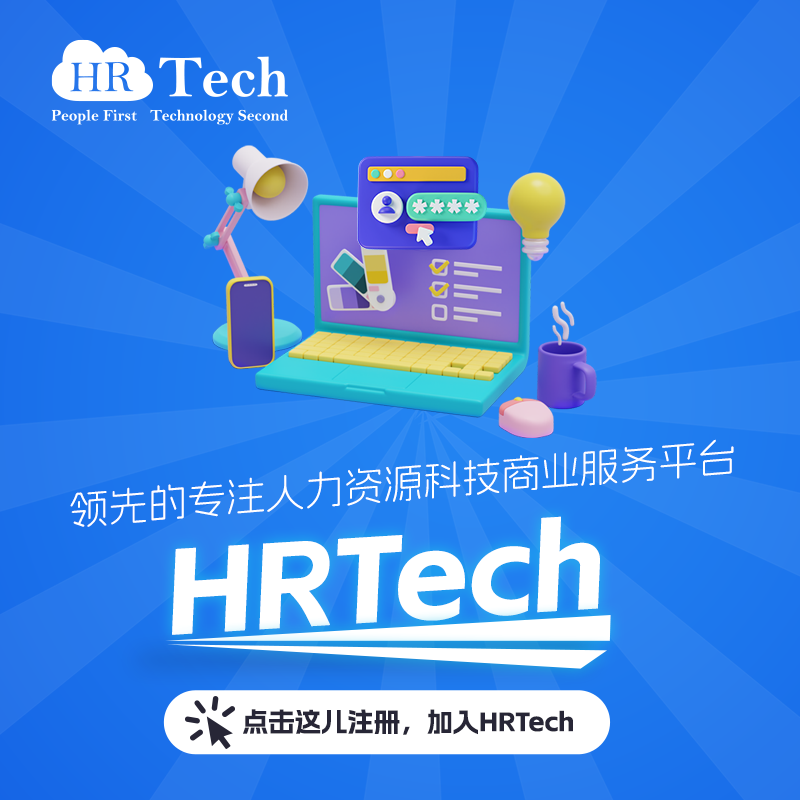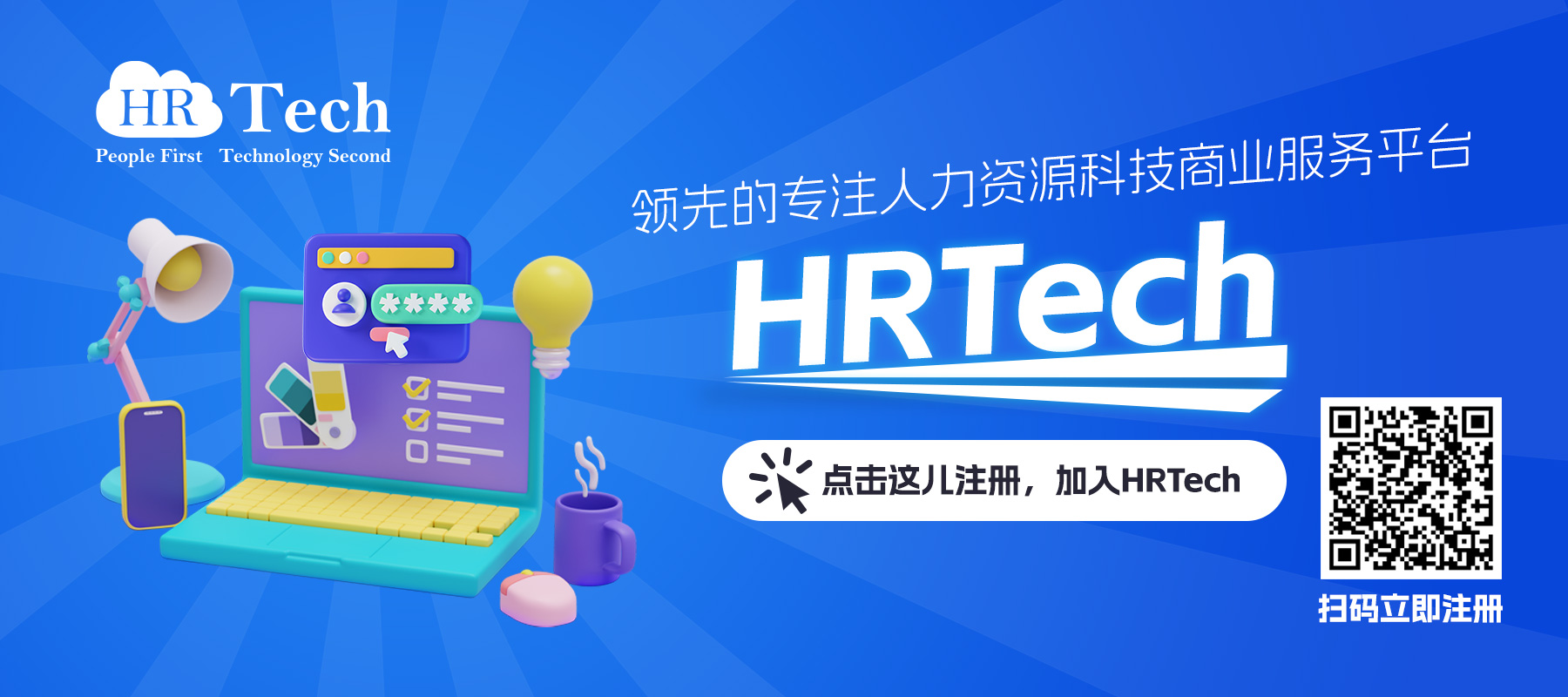-
 观点
观点
数字化培训是否会取代面授培训
前些天安利培训中心(ACTI)举办2014年产品讲师年会,来自全国的数百位安利内部讲师汇聚在阳澄湖畔,参加这场主题为“变·赢未来”的盛会,我受ACTI魏总监的邀请到场做了一个分享。开场的活动让我比较意外,居然是一场辩论赛,内部讲师组成了正反两个小组,分五个环节做了一场挺正式的辩论,辩题是:数字化培训是否会取代面授培训。
从一辩展开立论到相互对抗交锋,最后五辩总结陈词,双方你来我往、唇枪舌剑、妙语如珠,现场不时想起为台上辩手喝彩的掌声。这次辩论赛的过程也颇有一些数字化色彩,主办方专门开发了一个叫“聚师堂”的公众微信平台,台下的讲师们可以在每轮辩论结束时在手机上进行微信投票,为表现更好的一方进行点“赞”,最后谁能获胜很大程度上取决于大众投票,我们三位评委的打分并不是决定作用。从现场人气来看,反方在开始时占有明显优势,正方逐渐反击,第四轮投票几乎持平,最后的总结环节更是反超,但由于汇总的票数还是落后,最后还是反方获胜。
我觉得这个题目出得挺好,还是挺值得辩一辩,正反双方都可以能提出不少支持己方观点的论据。比如关于“数字化培训”的定义,从正方的角度来说可以想办法把它扩大化,比如说并不只是E-learning这种远程模式才是数字化培训,就算是面授课堂也正在大量使用数字化的教学方式。还有,是否”取代“也是一个比较模糊的概念,如果说完全替代才是取代,相信面授这种方式也不会彻底消失。这里面还隐含了一个定语是在什么时候,正方倒是抓住了这个点,反复强调”未来“这个趋势,而且也扣上了这次年会”变·赢未来“的主题。
我印象中反方的主要论点是数字化培训相对于面授培训有几个问题,一是不够人性化,二是不够个性化,三是缺乏互动性,这也正好反应了目前大多数人对于数字化培训的一些质疑。在我看来,反方的这几个理由倒是大有值得商榷之处。
首先是人性化的问题。提起数字,好像就是冷冰冰的,缺乏人性化。的确,很多数字化培训内容就是把课程PPT配上标准化的语音解说,或是干脆直接播放老师的教学视频,这让学员感受不到情感交流。其实数字只是载体,是否人性化,关键还是看培训内容本身的设计者以及担任讲授任务的讲师们是否能理解学员的心理。
大家一定会经历不少过无聊乏味的面授课程,老师在台上照本宣科,无论授课形式还是课程内容都没有层次感和节奏感,这样的课堂并没有多少人性可言。反而是不少设计精良的电子化教学项目,真正理解学员的需求,同时利用人性的一些特点甚至是缺点,比如贪嗔痴、羡慕嫉妒恨等,激发自身的学习兴趣,唤醒内存的学习动力,在电子化载体的引导下进入良性的学习状态。
就拿安利为例,他们去年九月推出的”安利人生九十天”这样一个针对营销新人的学习项目,就是用大型游戏这样的方式,模拟了一个与真实世界一样的的虚拟世界,有各种各样的工作场景,学员在游戏中完成与真实世界一样的工作任务。学员在学习过程中会感受到兴奋和刺激,从而愿意学习,这不也是一个电子化学习也可以很人性化的案例吗?
第二是个性化的问题。在我看来,数字化培训反而更能满足个性化的需求,因为面授培训最大的制约因素就是需要老师和所有的学员同一时间出现在同一地点,而电子化培训很轻松就可以现实时间上的异步和空间上的异地。对于同样一个电子化的培训课程,学员完全可以根据自己对该内容的掌握程度合理分配时间,略过已经懂的内容,对不太明白的内容反复多看几次。
第三个是关于互动性的问题,我觉得这更不是两者之间的本质差别。如果仅仅是视频类的电子化课程,老师和学员的互动只能异步进行,而面授课堂上,老师可以观察到学员的状态,因而可以发起有针对性的的互动,比如进行停顿或是向学员提问,这方面面授的互动质量占优。但现在很多的电子化培训已经很方便就实现了远程的交互,比如在YY或是多贝这样的平台上,学员可以很方便与老师进行实时的交流,老师也完全可以根据学员传递的信息调整课程的进度,也可以针对性的与学员进行互动。更不要说MOOC模式的课程,通过作业小组、学习社区等方式所产生的互动将大大提高学员之间的交互,学习的对象不再只是向老师,而是来自全球各地的学员。
上面我站在正方的立场对数字化培训的好处进行了辩护,但这并不意味着面授培训就会在不久的将来被全面取代,在线教育是否能将传统教育颠覆也还是一个未知之数。上次我在公众微信里做了一个类似的调查,仍然有超过半数的人认为在线教育只能起到一些改良的作用,不会产生根本性颠覆,我觉得这正是传统面授教育需要值得警醒之处。也许数字化培训目前还很不成熟,可是只要它在符合人性化的前提下不断改进,利用大数据的技术和思维彻底实现个性化,通过各类创造性的技术工具和渠道大幅提升互动性,相信其取代面授培训的趋势将不可逆转。
【文章来源:@付伟的轻描淡写】
-
 观点
观点
中国式MOOC
上次参加安利内部讲师年会,我在PPT中放出了上面这张幻灯片,问现场的几百位讲师最先看到的是什么,有人说students,有人说university,最大的那四个字母“MOOC”反而没多少人提。我请听说过“MOOC”的举一下手,只有三五个人响应,看来,MOOC对于传统行业的内训师们来说还是一个很陌生的概念。
上周腾讯公司的一些培训经理们在上海开一个内部会议,讨论移动化大潮下培训团队如何助力业务能力提升,会议负责人让我去分享一下移动学习,我打出同一张幻灯片,这次大多数都听说过MOOC,可当我问有没有人亲身体验过MOOC的课程,应者寥寥。看来MOOC即使是对于新兴行业的培训经理也只是有所耳闻却很少亲密接触。
关于MOOC,我去年写过好几篇文章,详细介绍了什么MOOC,为什么MOOC会火,还推荐了几门课程,如斯坦福的创意课,但那毕竟是外国教授用英文上课,离我们尚有距离。后来三大平台(Coursera、Udacity、edX)上陆续有了中文课程,比如台大的历史教授吕世浩讲的“秦始皇”,对于中国学生来说就感觉很亲切。再后来中国的各大名校北大、上海交大纷纷加入MOOC平台,也有一些学校开始建立自己的MOOC网站,如清华的学堂在线(http://www.xuetangx.com)等。MOOC离我们越来越近了。
早期的MOOC集中在大学教育,主要目标也是那些没有机会上名校的学习爱好者。现在MOOC已经开始向中小学教育扩散,最近上海推出了一个叫“酷学习”的学习平台,不仅有网站(http://www.kuxuexi.com)还有移动客户端APP,里面有从小学到高中的数学、物理和化学等各种课程。从严格意义上说“酷学习”还不能算MOOC模式,主要是一些知识点的教学视频,不过已经有学校借鉴反转课堂的理念,应用这些视频内容重新设计教学流程,课前学习知识点,课中讨论问题,课后巩固消化。
MOOC的原义是指“大规模的网络开放课程”,一种更加详细的解释是:一群愿意分享与深化自我知识的学习者,就某个主题,在一位老师的带领下,在特定的期间内,通过各种web2.0学习工具完成该主题的学习。
和传统的e-Learning相比,MOOC有哪些不同之处呢?在我看来,MOOC有以下几个方面的特点:一是更突出项目运营,从课程注册、定期开课、规定提交作业、结业测试再到证书发放,是一个完整的学习过程,二是更注重教学设计 ,一般都是名师亲自操刀,录制精致的教学视频,课程的结构和节奏更加合理,三是更强调良好的学员体验,比如视频课程往往更短,会根据学员的注意力进行停顿,同时互动性也更强,老师和学员之间、学员和学员之间都可以形成大量的互动。可以说MOOC更像是一个“活”的课程,学员可以有一种真正在“上课”而不是“看课”的感觉。
作为一种新的学习方式,MOOC不应该仅限于基础教育领域,而是可以应用到企业培训里。虽然企业已经很早就有了e-Learning,但学习的效果并不如意,我们很自然就会想到,是否能用MOOC的理念和思路来运营e-Learning项目。
我们银联培训中心在几个学习项目中做了一些尝试。去年我们开发了一套银行卡专业知识的课程,如果仅仅是放在“银联网络学院”这个e-Learning平台上,估计学习的效果不会太好,于是我们把它设计成了一个认证项目,并根据MOOC的理念设定了专门的开课时间,报名的学员组成学习小组,每个阶段都安排了指定的学习任务,由小组长组织团队共同完成,还邀请了专家讲师团为学员进行辅导和答疑,最后只有完成作业并通过测试的学员才能拿到证书。
第一期项目试下来,效果超出了我们的预期,于是我们在春节前组织了第二期,结果公司三分之一的同事主动报名参加。后来我也将这个项目对银行卡的所有从业人员开放,和人民银行培训中心合作推出了这个“银行卡从业人员专业认证”的项目,目前已经有很多银行的同仁报名参与学习,也请大家帮忙转发给更多有需求的朋友。
前几天中国远程教育杂志就MOOC在企业中的应用来采访,我让同事专门整理了一篇文章,详细介绍了项目过程中的一些做法。其实这个项目真正意义上的MOOC还有很多不同之处,比如没有一个专门的授课老师,视频内容偏长,互动还远远不够深入。但对于企业来说,概念并不重要,关键在于实效。我们没有必要非要把学习项目包装成为MOOC,只要我们能够把MOOC中一些有用的理念运用到e-Learning项目中,更加重视教学设计、项目运营和用户体验,用一些创新的方法提升学习的效果,就一定能走出一条中国式MOOC之路。
文章来源:@付伟的轻描淡写
-
 观点
观点
Linkedin与微信又合作了
PingWest曾经在全球范围内最早报道了微信接入LinkedIn账户在用户个人信息页面的消息,它发生在LinkedIn正式宣布推出本地化的简体中文版页面的一个月前,被视作是LinkedIn正式对中国大陆本地用户提供服务的预热。最近,根据PingWest获得的消息,LinkedIn与微信二者之间的合作已扩展至全球。“微信账号”已经出现在LinkedIn部分美国本土用户的“个人资料设置”的”联系方式“默认选项中,用户可以添加和直接编辑自己的微信ID,开放给自己的LinkedIn人脉连接者。至此,微信成为LinkedIn在美国除了Twitter和个人网站之外,第三个被默认出现的“联系方式”选项。
这一功能目前只针对个人资料设置中现实常住地为美国本土、系统语言设置为英文的美国用户开放。也就是说,LinkedIn与微信的这一步更“深度”的合作并非为了中国市场,而意在全球。
将微信接入LinkedIn的整个过程都是“微信式”的——打开LinkedIn并进入个人联系方式设置,你会看到Twitter、WeChat和Website并列在其中。点击编辑按钮后,页面中会出现二维码,在利用微信“扫一扫”后,微信将跳转至确认页面,在点击“确认”完成后,LinkedIn页面上的二维码会随即消失,并出现你的微信账号。在整个过程中,用户无需输入任何信息,完全通过二维码与“扫一扫”完成过渡。
对LinkedIn的“主流”用户来说,这种完全“微信式”的添加方式显得突兀但有趣。它的背后,是微信与LinkedIn的“等价交换”——将LinkedIn账户接入到微信用户的个人设置中,微信可以更好地帮助LinkedIn在中国潜在用户中推广;而LinkedIn首先在美国用户的个人设置中增添微信ID作为联系方式默认选项,则有助于微信在美国获得更多高质量的用户(LinkedIn用户74%拥有大学及以上学历,39%年收入超过10万美元)。
在中国,人们互相添加微信的使用场景与在美国人们添加LinkedIn的联系方式越来越接近(职场上认识即可互相添加)。在美国,微信也尝试过利用Google联系人展开病毒式营销。在1月底之前,在微信中绑定Google账户并通过Google账户添加5个联系人的用户将可以获得礼品卡等礼品。这项活动目前已经结束,效果不得而知。
而据PingWest的了解,接下来双方的合作还将进一步深入——LinkedIn的产品团队正在密集测试下一项功能:即当用户在LinkedIn上添加微信联系方式成功之后,他/她的第一度LinkedIn人脉(即直接在LinkedIn上与其连接的用户)就能在其个人页面顶部的资料栏中看到该用户的微信二维码——然后再用很“微信式”的扫一扫功能,就可以直接添加对方的微信联系方式了。
LinkedIn也计划将微信添加至默认联系方式的功能推广至美国之外,包括在中国境内将系统设置为英语的LinkedIn用户可能接下来会获得这项功能的接入权限,而中国本地的简体中文版用户并不在优先考虑范围内——这背后不仅仅是LinkedIn的考虑,更是微信的算盘。
文章来源:pingwest
-
 观点
观点
CraigConnects人创始:女性会统治科技领域吗?
作者:Craig Newmark,CraigConnects 创始人 (本文最初发表在linkin) 。
惊天消息!参加加州伯克利大学(UC Berkeley)计算机科学课程的女性学生人数首次超过了男性,这是否意味着一个科技新趋势的到来呢?
目前,有关这一情况的具体数据尚不明朗,但《水星报》(Mercury News)的麦克-卡西迪(Mike Cassidy)表示,自从哈维姆德学院(Harvey Mudd College)开始强调编程的重要性,并开始为参加年度“Grace Hopper Celebration of Women in Computing”活动的女新生给予补贴后,哈维姆德学院计算器科学专业女学生的比例就从10%猛增到了如今的43%。
与此同时,卡西迪相信全美计算机科学领域女学生的比例情况正在逐渐变糟。卡西迪表示,1984年时,全美有超过37%的计算机科学本科学位都授予了女学生。但到了1995年,这一比例就下降到了28.5%。而2011年的美国教育部统计数据显示,目前这一比例已经下降到了17.6%。
然而就我而言,我认为这一领域的总体趋势已经在逐渐改善。比如,目前斯坦福大学计算机科学专业的女性毕业生数量已经达到了史上新高、加州伯克利大学参加计算机科学课程的女性学生人数首次超过了男性、哈佛大学大二女生宣称自己就读计算机科学专业的数量也迎来了增长。在我看来,恰恰是这些小微事件的一步步发生改变了此前的这一局面。
那么,你注意到计算机科学领域女性数量的变化了吗?你是否认为这一领域的男女平等情况正在逐步改善?(汤姆 编译)
-
 观点
观点
克服移动学习所面临的障碍的四种方式
有些令人兴奋,又有些伤脑筋。不过事实是所有的系统都正在“移动化”,而且我们知道这种变化是正确的。你得到了利益相关者的准许,你也确定了相关内容,此外你有了所必须的技术。这是一个前途光明的领域。
所有的这些都呈现出好的迹象,不过你可能没有预见一个可能出现的障碍:如果你的移动学习项目受到了来自受众目标的障碍怎么办?
受众目标的反对可能有不同的原因,但是你需要考虑可能的原因并提前做好准备。如果在进行移动项目的过程中增加一个策略制定的过程,那么项目实施过程中可能提早发现障碍根源。
然而,发现问题与迅速对其做出反应是两码事。如果你确实遇到了一些问题,这里有些好的建议来迎接挑战。
1. 解除误解
首先,你需要解除人们对于移动学习存在的一些误解。
移动学习的出现可能会带来人们“对未知事物的恐惧”,他们可能会需要提前了解信息,甚至可以采用手把手教学。
使用企业常用的沟通工具为用户带来好的移动学习应该有的体验。开放一个空房间展示移动学习原型。到不同的地区宣传新学习平台的好处。
最重要的是,倾听学习者的心声,了解他们为什么不愿意使用移动学习。对于他们提出的问题给予简单明了的回答。他们想了解“对我来说这有什么好处?”而你的回答将是应对他们不情愿的最好的武器。
2. 使用熟悉的内容
如果你刚开始实施移动学习,那么明智的做法是选择用户熟悉的内容,甚至是他们非常了解的内容。
你懂的。在LMS中利用数据或者其他的指标测试网站的流量,或者通过询问或者自己对信息的了解获取更多信息。
仔细再看一下内容,对其重新设想并规划使其适用于移动设备。让观众们知道,他们想要了解的内容可以更方便的在移动App上访问。好的移动用户体验及用户界面设计会为移动学习的推广加分。
3. 设定正确行为标杆
企业中有没有那种天生的领导者?有没有那种其他员工都尊敬的人?或者有没有能够很快获得他人认可与信任的人?
如果领导者对移动学习方案还持有怀疑态度,那么你可以向他们展示那些优秀员工作为案例。很有可能学习者就在等待着人们向他们展示如何使用移动学习或者它到底有多“好”。
你可以尝试着举办一个在线会议或者视频文件,展示优秀员工的标准行为,清除人们对新的学习模式的困惑、担忧及不信任。确保你选择展示的员工非常肯定移动学习能够带来好处,这样才能显示出真实感及对移动学习的热情。
4. 激励
对移动学习产生抵触心理的员工是否主要来自销售部门?好办。如果他们能够通过移动学习获得成功,那么他们就会非常坚定的支持这种新型学习方式。提供激励机制可能是最好的方式使他们尝试新型的移动App。
你可以充分利用销售代表那容易被点燃的竞争精神。
在第一个App上设定数据分析系统,跟踪学员的累计使用时间,页面重复浏览量等其他可以用来判定移动App使用冠军的数据。
对冠军提供奖励,这使大多数的销售代表难以拒绝。当然,在开始时候你可以“购买”他们的认可,但是隐藏目的是一旦他们开始使用App,他们就会养成习惯。
无论谁在哪种企业环境及企业文化中进行变革,都不可能会一帆风顺。
管理变革是移动学习实施过程中的一个重要组成部分,如果你能够以创造性的方式应对移动学习推广过程中遇到的挑战,那么你就有机会在这场战斗中提前获得胜利。
然后,你可以向着你的目标再迈进一步——使用移动学习帮助员工成长,使他们变得更加强大,更加有效,在日常工作中有更出色的表现。
小崔 编译
-
 观点
观点
善于倾听你的“云端”客户,我们能学习到很多
企业为什么使用我们的解决方案
我有很多HR的朋友,在过去的二十多年里也帮助他们解决了些问题。这些经验告诉我:
你可以通过”倾听“客户学到很多,我在2013年底走访了不少企业,收获良多;互联网也给了许多方便,微信朋友圈就是个不错的选择。
提问,然后仔细听,这些是我能学到的:
人们(企业)需要解决什么问题?
这个问题的成本究竟有多大?
他们在如何寻找解决方案?
有什么可选项?
他们使用体验如何?
问题被解决了么?
问问题也需要锻炼,有相似的行业背景对提问者有帮助。和被提问者有良好关系也能够问出更多客套话之外的内容。
分享,然后再提问
光问而不分享是不道德的 ,分享的方式有很多,可以加入一些学习型的行业组织;可以写博客/微信;也可以定期组织线下的Workshop或Seminar。
顺便提一下,周五我也去参加HR沙龙的高端活动 - 2014 HRTECH论坛上海站。欢迎对HR技术感兴趣的朋友参加!(访问http://www.hrtechchina.com/event/2014sh了解详情)
别在错误的地方浪费太多的金钱和时间
没有这些客户的声音,新服务/产品创新很难、几乎不可能。如果创业团队不真正了解企业的需求和痛点,怎么能够给出理想的解决方案?
文章来源:村长专栏
-
 观点
观点
Google宣布推出在线数据解读课程
·谷歌将推出一门MOOC课程,为大众传播调查、研究及数据相关知识。
·《了解数据》将于3月18日—4月4日开始对公众开放。
·该课程与谷歌公司的“Fusion Tables”有关(Fusion Tables是一款数据展示工具),但是课程中大部分原则都具有普适性。
谷歌推出了自己的MOOC课程向大众讲授如何看懂调查、研究及数据。该课程名为《了解数据》,将于3月18日—4月4日在网络开始开放。跟其他的MOOC一样,课程将以视频讲座模式向大众免费开放,并且有互动功能,也有社区助教的支持。最终完全完成课程及课后练习的用户甚至可以选择申请“结业证书”。
该课程的上线也表明Google正式加入盈利性在线教育服务商这一逐渐增长的趋势,这也响应了白宫提出让更多的人了解数据科学的号召。2014年,两家最大的MOOCs公司Coursera和Udaxity都宣布了其数据科学项目及付费课程完成证书。谷歌发言人表示,该产品与其“Fusion Tables”产品有关,该产品是一款专门为数据处理而开发的工具,可以将数据以图形、图表及图片的格式展示出来。但是与其他专门为应用程序开发人员的标准教学课程不同的是该课程更加大众化,更加通俗。
也就是说Google正在努力弥补现有教育系统中存在的一个大的差距,当然同时也在推销着自己生产的产品。“《了解数据》为那些日常生活中可能会用到数据的人而开发,比如说学生、教师、记者以及中小企业的老总等,他们想要获取更多的信息并应用于解决实际问题过程中。”
实际上,该课程是与edX联合开发的,也是大众可以创建自己的课程的一个开端。
Google在这个潮流中可以算是一个大赢家。非常多的教师及业务人员需要一些基本数据及计算的能力。这个为期两周的课程非常容易被应用于高中社会科学课程中。
在过去几个月中,我参加了一节Coursera上的数据学MOOC课程,该课程质量绝对可以与我在母校加州大学时学的课程相媲美。MOOCs曾吸引过数十万学员,因此,公司精明如谷歌,自然能够轻易从产品营销中赚回成本。
再看4月份的课程,事实可以充分证明把业务当作学校这一行径将有可能进一步摧毁高等教育及成人教育市场。也就是说,如果企业开始扮演教师的角色,他们需要仔细权衡企业利润及大众教育目标之间的关系。来自行业大佬的公共课程是非常吸引人的工具,但是每个人、每个公司都应该有自己的独特的优势。
【小崔 编译】
-
 观点
观点
BYOD对elearning来说意味着什么
想要知道BYOD环境下学员将会使用什么样的设备很难。现在流行的工具两年之后可能就过时了,因此人们“当下”使用什么样的设备很难预测。未来的elearning将一定可以在所有的电脑上、笔记本或者平板电脑上学习,甚至手机都有可能。如果操作系统只能在一种浏览器上应用,那么在可选择性增加的时候,该方案可能就不好用了。甚至,随着触屏输入法的出现,与elearning的实体互动也将重新考虑。
HTML5能够适应于更多的平台,elearning开发者原有的许多工具都已经失去效用,不能够再继续为其提供持续的内容及体验。本地应用成为向某个平台交付内容的最佳方式,只不过他们将学习者的时间及学习内容都碎片化。相较于HTML5,基于动画的elearning对作者来说更加简单,更容易控制,更容易互动。但是其存在的问题是不能适用于所有的平台,已经过时。Elearning编辑工具逐渐开始支持HTML5,但是输出并不是在所有的平台都能够一致。
Elearning专家如何开发BYOD环境中好用的Elearning课程
BYOD更多的意味着移动学习,因此许多指导原则都应用于移动设计。其普遍适用的原则就是简洁性,在理想的情况下使用相应布局。每个幻灯片至多包含一个中心思想,尽量减少每个幻灯片所包含的信息。选择更加广泛的登录环境,而非指定的某种设备;最好为所有的学员提供相同的学习体验,而不是由于一小部分学员而使得其他人都难以理解学习内容。
BYOD带来的另外一个问题是跨平台测试变得越来越重要。在开发人员的计算机上显示正常的内容在学员的电脑上可能就无法显示。很多时候,elearning供应商并没有保证学习内容可靠的工具,甚至其服务器上也全是虚拟的测试机器。Elearning开发人员必备的工具可能很快就会包括自动跨平台测试工具,如Sauce Labs,或者管理测试解决方案,如eLearningQA。
BYOD来了,你的elearning准备好了吗?
小崔编译
-
 观点
观点
移动招聘逐渐成为新主流
据美国著名财经杂志基普林格(Kiplinger)发布的《经济展望》报告称,美国2014年将增加230万个新的就业机会。另据招聘信息发布网站凯业必达(CareerBuilder)的最新调查显示,五分之二的专业人才计划在年底前换工作,为风起云涌的人才市场做好准备。
因此,真正想要求职的人应当随时做好求职的各项准备工作,哪怕像通过移动设备发送求职信那样的奇招也可以考虑。
移动招聘逐渐成为新主流
去年的移动招聘洞察大会(Mobile Recruiting Insights Conference)宣布,在财富500强企业中,只有26%的企业提供了针对移动优化的求职途径,但是那项数据随时都会上升。随着移动设备的销量超过PC销量,商业界可能会推出一些更容易的移动求职途径。
全球人才管理软件平台Technomedia Talent Management的产品营销与战略副总裁雷彦内杜恩(Rayanne Thorn)预计,移动将会成为新的主流招聘途径。
杜恩称:“越来越多的人开始使用移动设备来完成所有的计算和在线工作,在线求职现在已经成为新的规范。亲自上门递交求职信和填写求职申请表的时代已经一去不复返了。在大多数情况下,招聘工作正式开始之前求职者都必须在网上提交申请表,鉴于现在已有70多亿台移动设备散布在全球各地,通过移动设备来递交求职信成为标准的做法就不足为奇了。”
玄德网的负责人Richard也认同这一看法,越来越多的企业客户看中了玄德移动招聘的功能,把它做为企业招聘渠道的重要补充,是一个雇主品牌宣传的新途径。
移动可能会成为求职者的一项优势
即便技术创新会推动变革的发生,但那对于求职者来说也不一定就是坏事。
人才招聘软件解决方案供应商iCIMS的首席营销官苏珊维塔勒(Susan Vitale)解释说:“通过移动来求职对应聘者比对招聘者来说更有利。随着近几年经济的发展,越来越多的人开始考虑换工作。基本上,利用移动设备求职的目的就是确保当你看到就业机会时可以立即提出申请,这样求职者就不用像以前那样先把网站收藏起来,等有空时再去提交求职申请。”
求职者应该将简历保存在移动设备上
求职者在利用移动设备提交求职申请之前必须做好规划工作。首先,必须随时能够调出你的简历。
杜恩建议,求职者应该把自己的简历保存在网络上或象Google Docs或Dropbox那样的云存储解决方案上,那样才能随时调出自己的简历。此外,在LinkedIn那样的网站上建一份在线简历或在WordPress中保存一份PDF格式的简历也是一种不错的做法。很多企业接受求职者“利用你的LinkedIn档案提交求职申请”,并且已经将这一条加入到他们的求职指南中。
维塔勒称,很多高效率的求职跟踪系统可以让求职者从那些基于云的存储解决方案中访问他们的关键文件比如建立、支持文档等等。她补充说:“最好的求职跟踪系统可以从求职者的建立中自动分析和提取出重要的数据,包括个人背景资料、工作经历和受教育经历等等,这样就可以将招聘过程中的人工数据输入工作降低到最低程度。”
维塔勒强调说,对于那些想要通过移动设备提交求职申请的求职者来说,持续更新他们保存在社交媒体网站上的简历是很重要的。她说:“先进的求职跟踪系统可以让求职者利用招聘方从他们的社交网站简历档案中提取的数据建立一个档案。”她强调说,你在社交网站上保存的简历必须能够反映出你的职业素养,而且应该是非常准确的,这一点特别重要。
通过移动设备提交求职申请会加快招聘工作的进展速度吗?
求职者和招聘者最想搞清楚的一个重要问题是,通过移动设备提交求职申请是否会加快招聘的速度?因为归根结底,求职者是想尽快获得那个职位,而招聘者也想尽快填上空缺的职位。
最后的答案并不确定。斯穆克称:“如果一家企业接受移动求职申请,那么它的招聘策略就领先于包括很多财富500强企业在内的大多数企业。求职者提交申请的当天,企业就能接到申请书并给出回复,然后在两周内向所有被回绝的求职者发出回复。”
另一方面,杜恩指出,整个招聘过程将因为新技术而加快,招聘经理们仍然需要尽快适应这一变化。她说:“不幸地是,招聘的过程是一样的,你也许会也许不会更快地接到回复。我可以肯定的是,如果一家企业建立了完善的移动求职过程,那么变化的只是他们将把招聘过程的更新工作做得更好,这对所有人来说都有好处。那也正是我们想要看到的结果。”
有一件事是肯定的:随着我们与移动设备之间的联系越来越密切,企业组织肯定会调整它们的工作流程以博得观众,这也包括招聘工作在内。想要招聘顶级人才的企业可能会将它们的招聘工作转移到求职者愿意花时间的那些平台上去。
文章来源:腾讯科技
-
 观点
观点
LinkedIn是如何利用数据分析驱动产品的?
让我们看看这家全球最大的职业社交网站、第三大社交网络的运营数据。目前,LinkedIn有着2.7亿注册用户,大约400万家公司入驻,已经成为了职场人士最重要的在线交流和招聘求职平台。更引人注意的是它对高端企业用户的吸引力:大约90%左右的TOP100企业在使用Linkedin的服务。
从它的营收数据中也可以看出这些业务的增长潜力。LinkedIn的收入主要由人力解决方案(即招聘)、市场解决方案(精准广告)、订阅产品(针对个人的付费增值服务)构成,2013年Q4财报显示,这三项收入分别有2.456亿美元、1.135亿美元和8810万美元,同比涨幅分别达到53%、36%和48%。
实际上,LinkedIn的这一整套业务尤其是商业模式,是由数据分析和处理能力驱动的。随着注册用户数、入驻企业数量的增加,LinkedIn所需要处理的数据量也呈爆发性增长。社交网络上的每个用户产生的分享、评论和互相之间的互动都是数以TB乃至PB计,而为了让招聘者和求职者更准确地匹配,让广告推荐更加符合用户的真实喜好,准确和靠谱的数据分析是构建LinkedIn整个服务的基石。
在3月7日举办的阿里巴巴大数据论坛上,LinkedIn数据分析部资深总监Simon Zhang(张溪梦)详细介绍了数据在整个LinkedIn产品构建当中的重要性。他说,整个LinkedIn的商业模型由三个循环驱动的环节构成:首先是用户的增长以及用户的体验,其次,用户的增长和体验增加了很多的后台和前台的数据;第三,Linkedin会从这些新的数据里面发现更多的解决方案和产品,以推动商业的增长、用户的体验和用户数量的增加,从而进一步产生了更新的数据。
因此,数据实际上是贯穿整个LinkedIn产品的重要组成部分和驱动力。而针对数据的分析和处理,就成为驱动整个链条运作的关键一环。
Simon称,在他加入LinkedIn的9个月后,就确定了进行内部数据分析的三大原则:第一个是简单,任何人都能够看明白看懂;第二个是迅速,越慢接受度越低,越快接受度越高;第三是规模化,希望Linkedin内部所有的员工都能够用数据分析帮他们做决策。
LinkedIn是如何在数据分析中实践从而得出这三个原则的呢?
首先是推翻传统的数据分析方法,重新构建一个分析框架。LinkedIn进行数据分析的基础是:一,分析师要从产品、市场、销售和运营出发,先要了解和使用产品;二,进行产品追踪,实行产品数据标记,保证数据质量——也就是说分析师本身要分析自己以后要分析什么,这样才能把正确标记加到数据库里面去;三,数据和数据质量管理,即了解数据库之间的公用,流程,每种数据是怎么分工的。在这基础之上,才是传统分析中的专题分析、商业智能与报告、深度分析等等。
在完成整个分析框架底层的构建之后,就可以实现规模化了——把这些工作写入系统,系统可以模拟之前所做的大部分工作,然后让每个员工都能使用这些数据分析结果,从而进行进一步的决策。
 扫一扫 加微信
hrtechchina
扫一扫 加微信
hrtechchina
 观点
观点
 观点
观点
 观点
观点
 观点
观点
 观点
观点
 观点
观点
 观点
观点
 观点
观点
 观点
观点
 观点
观点





 扫一扫 加微信
hrtechchina
扫一扫 加微信
hrtechchina




